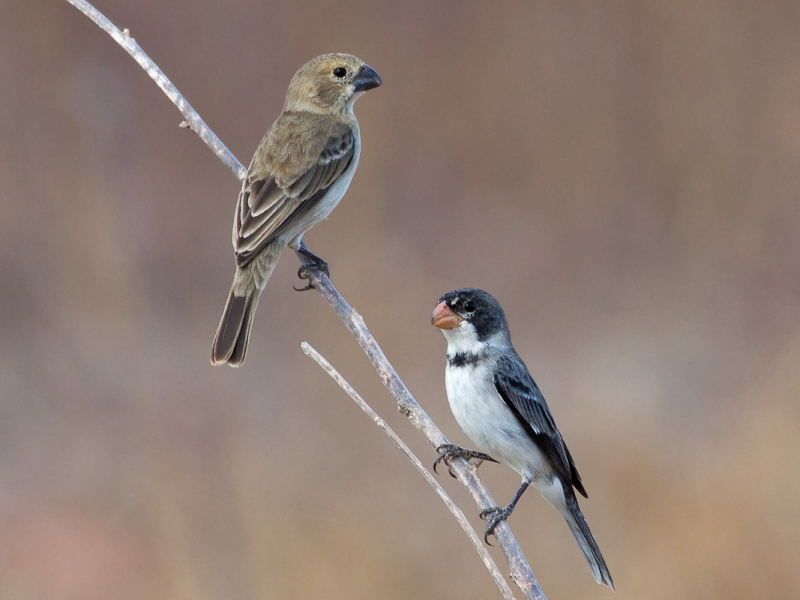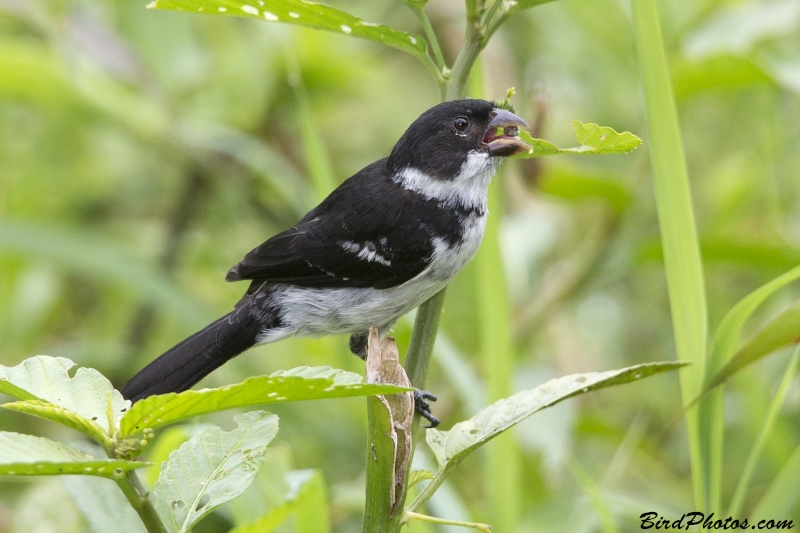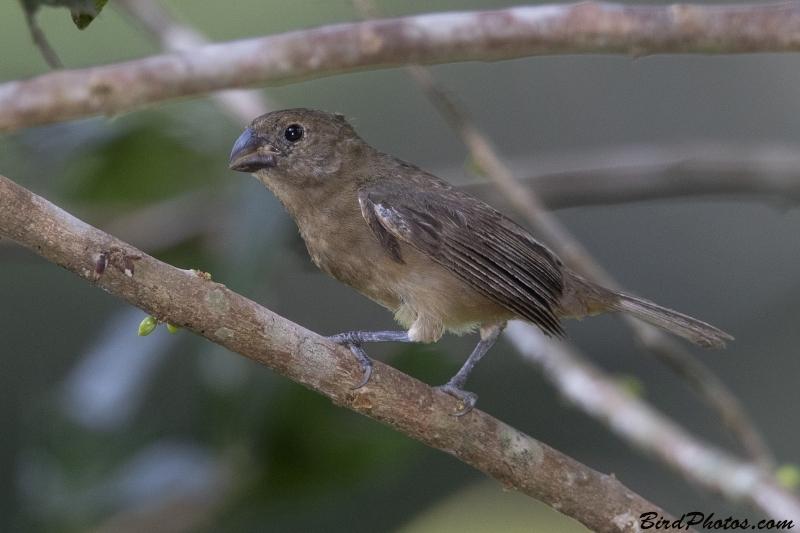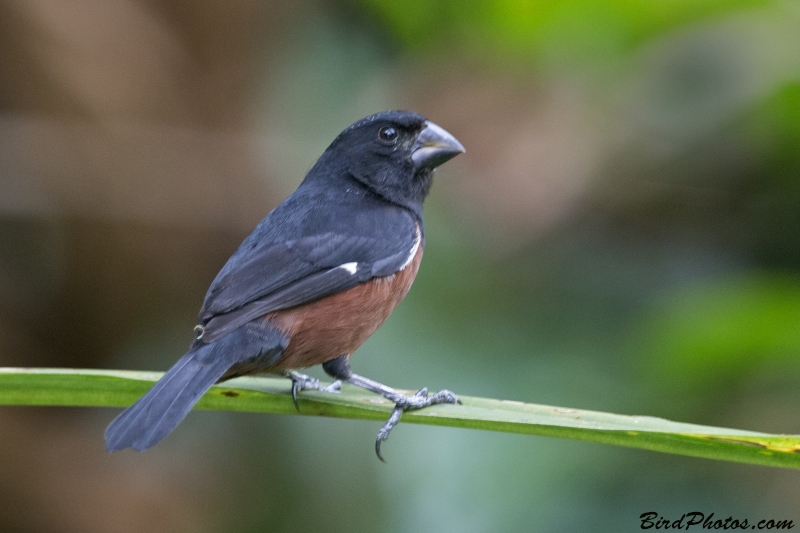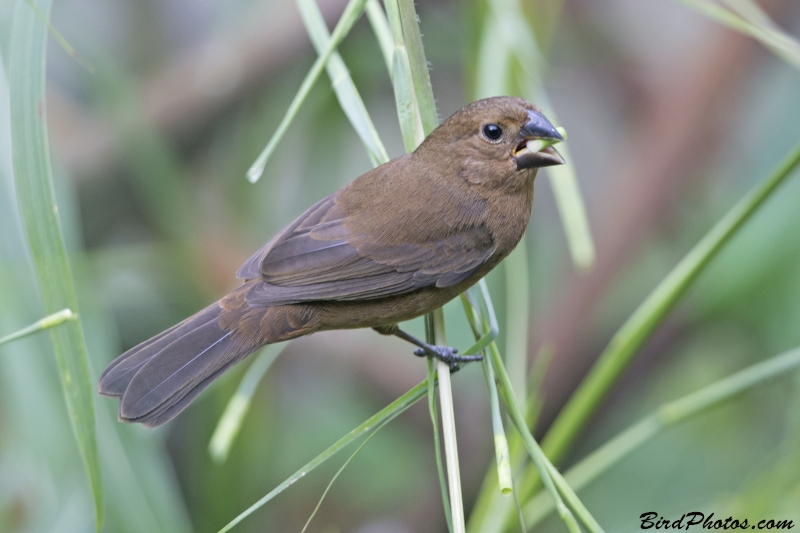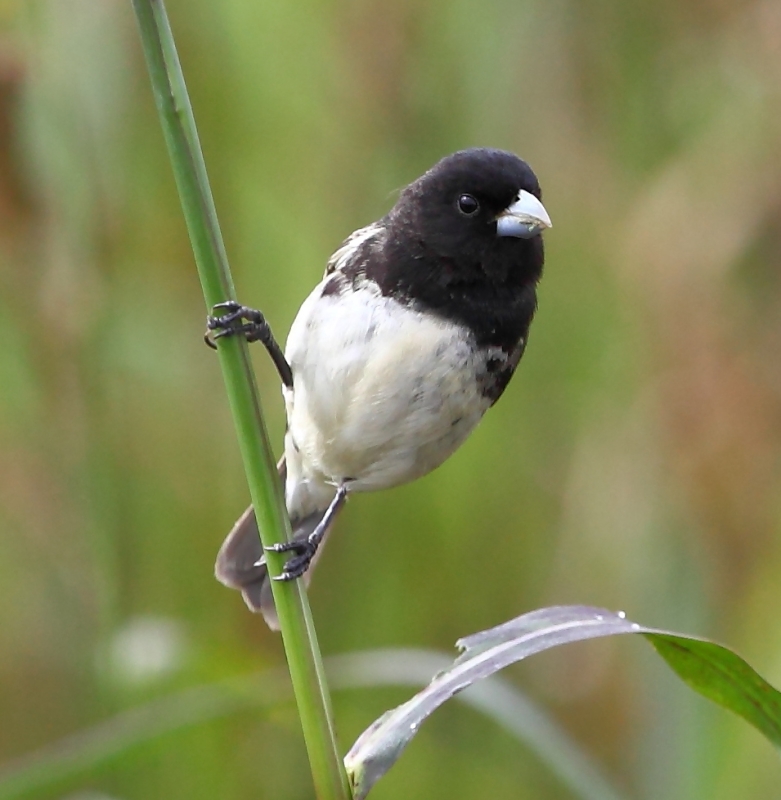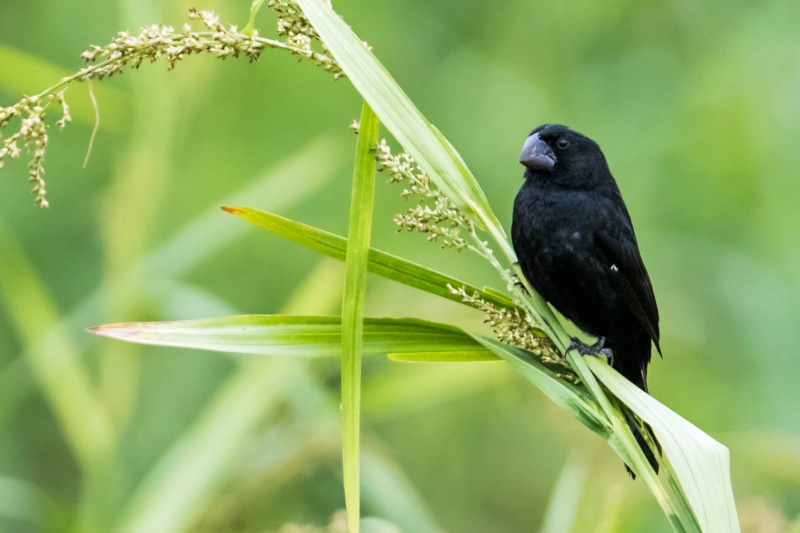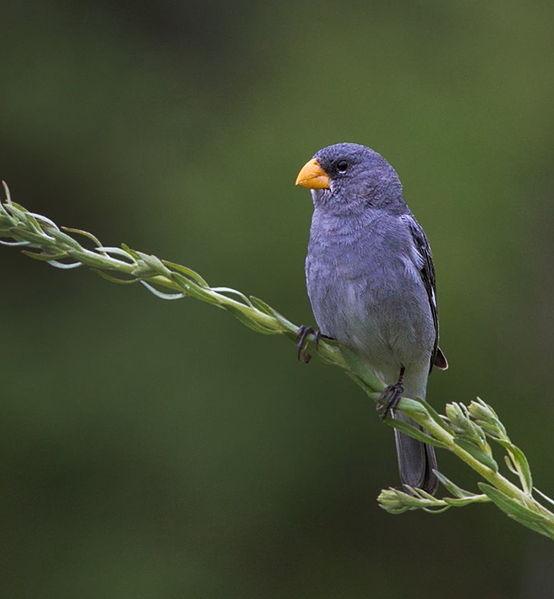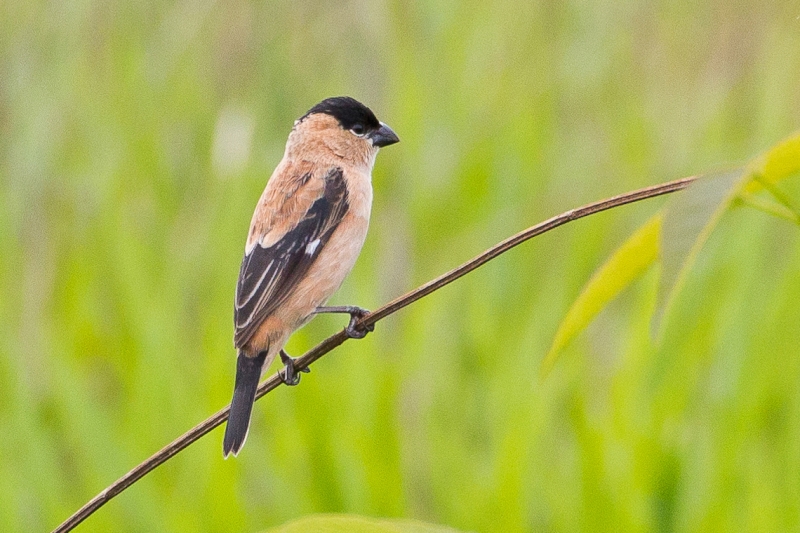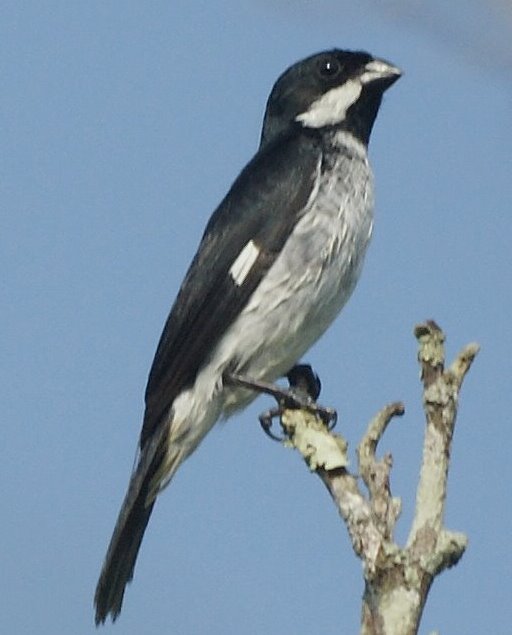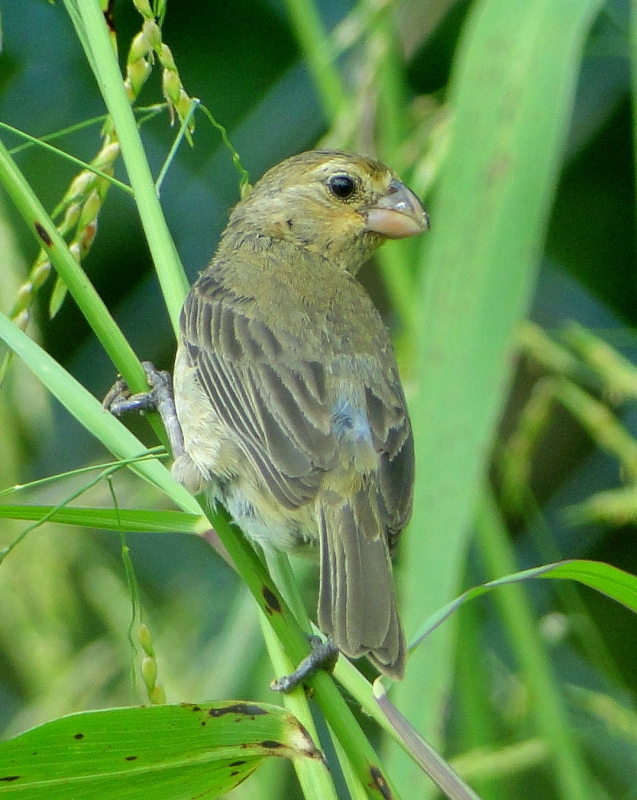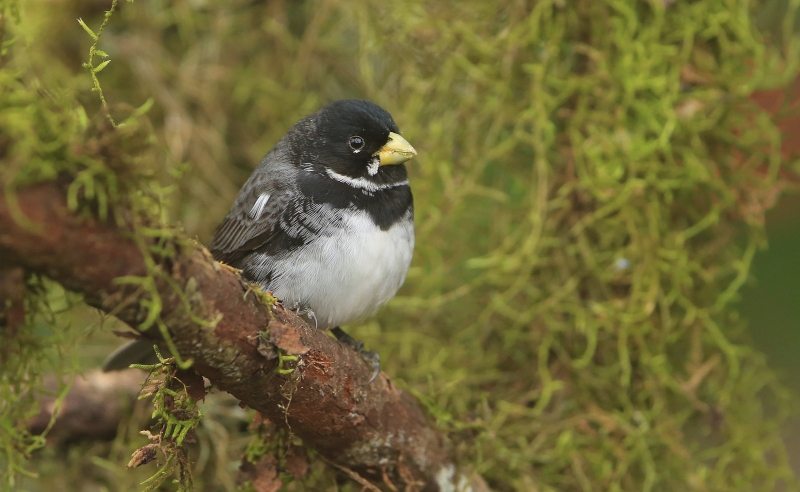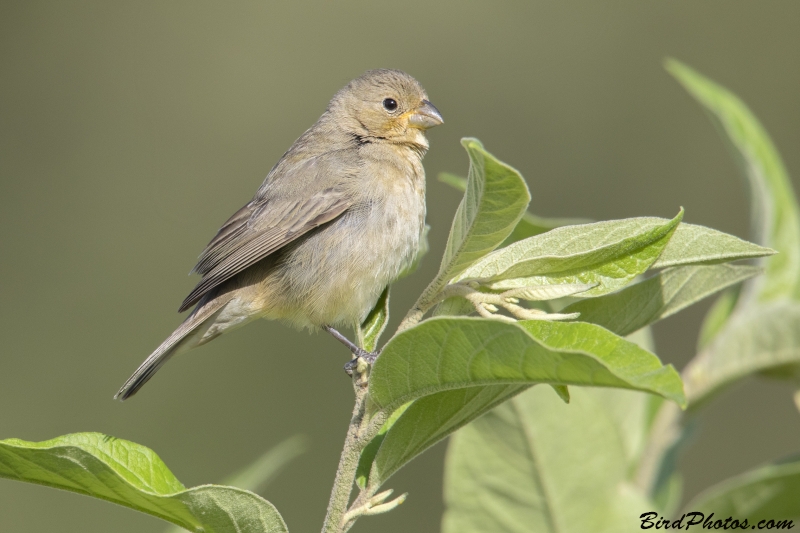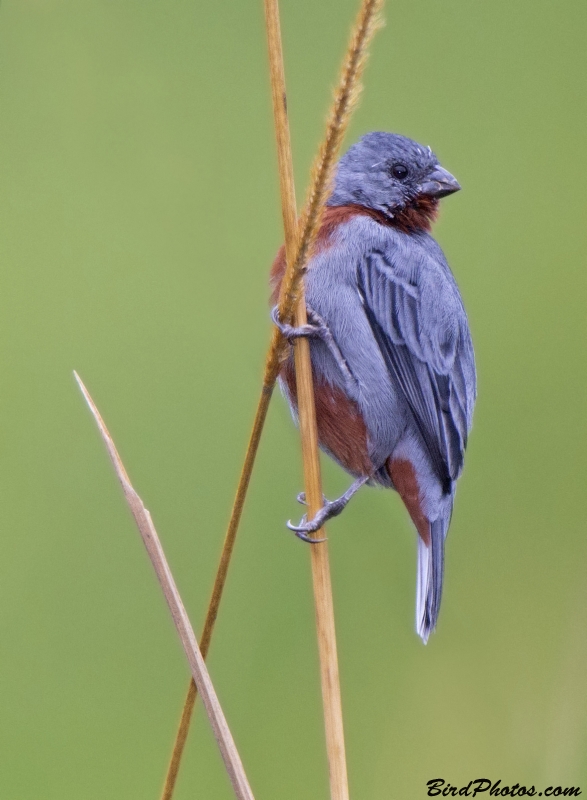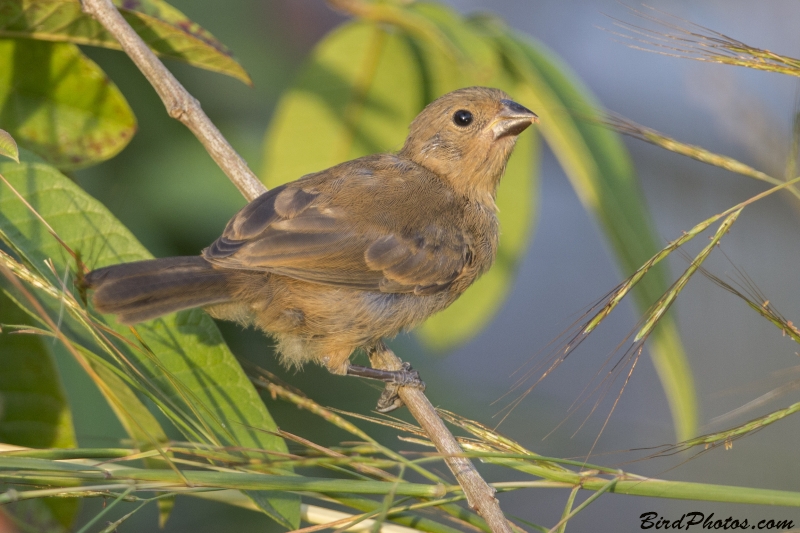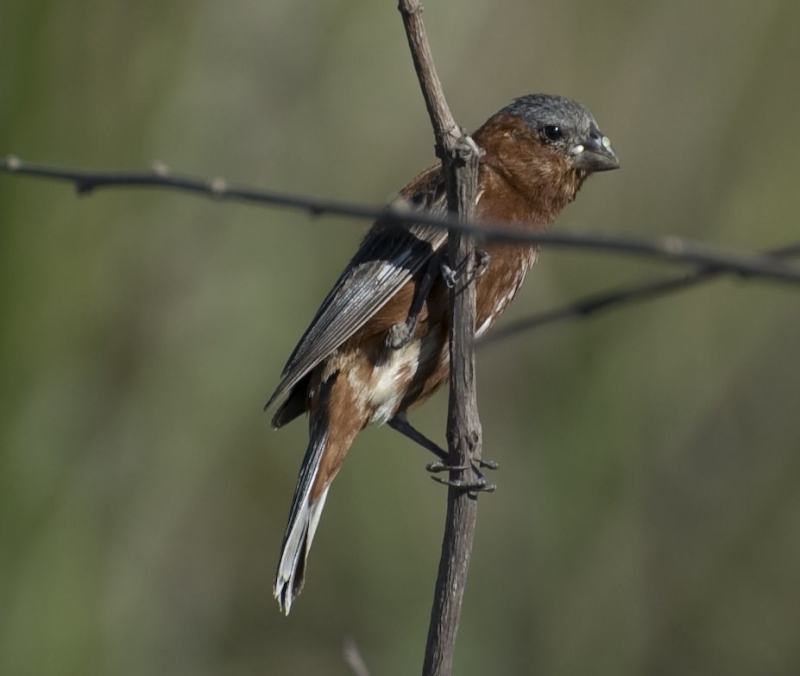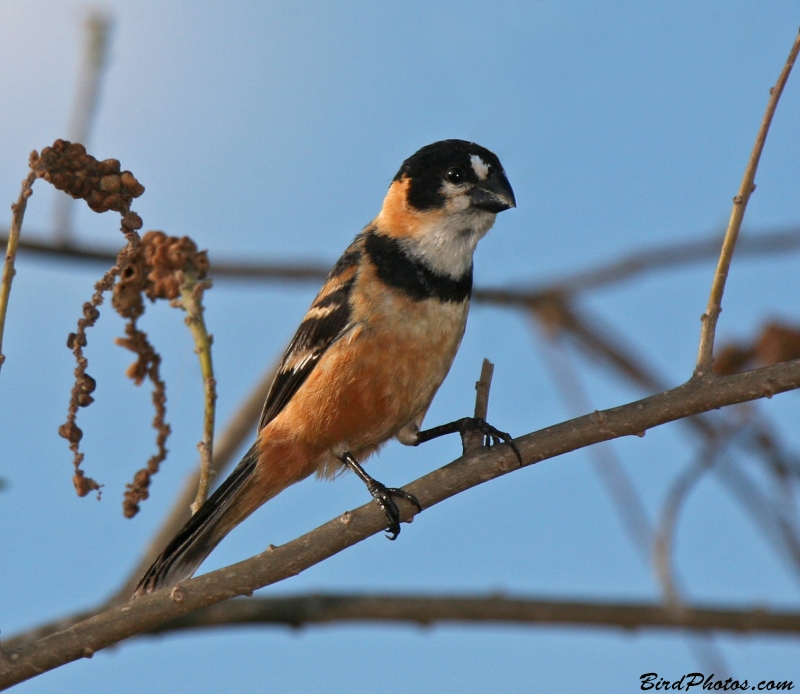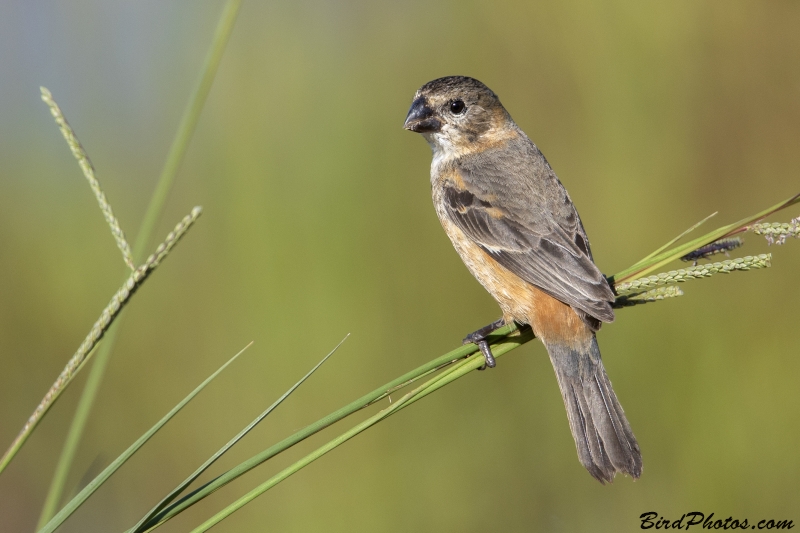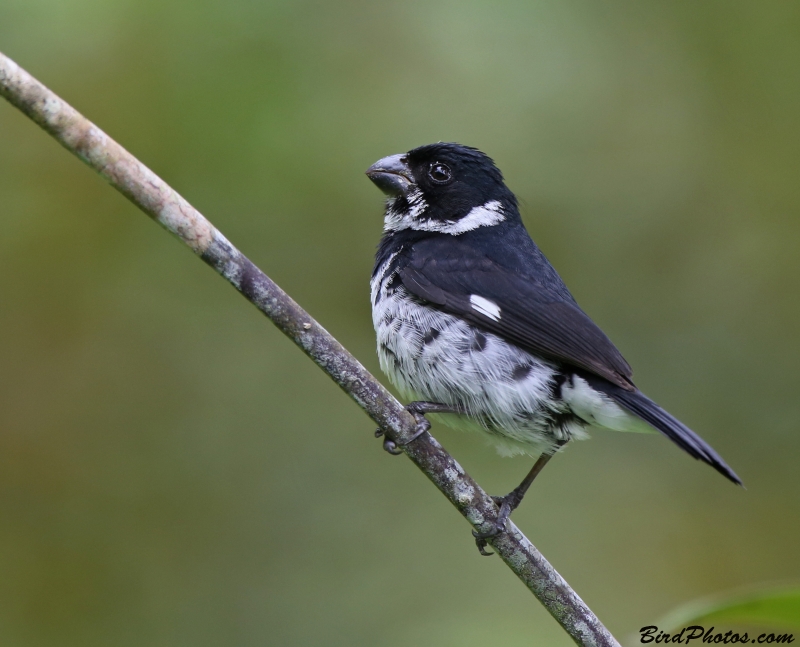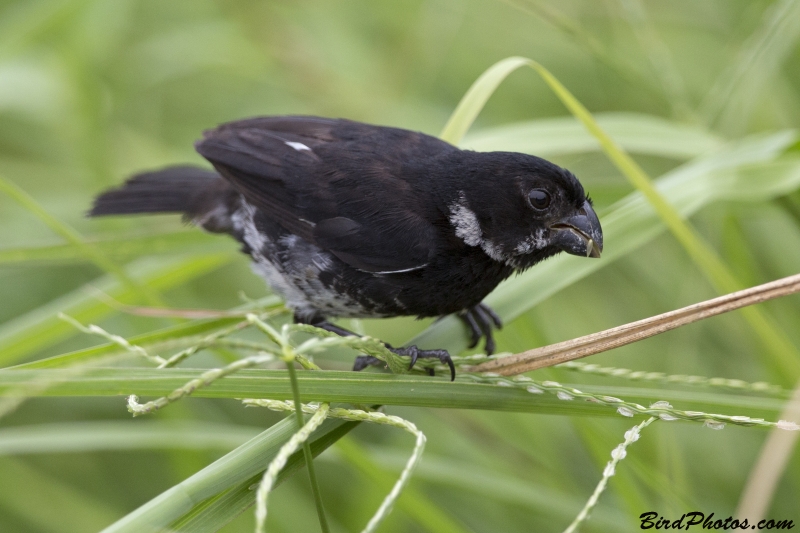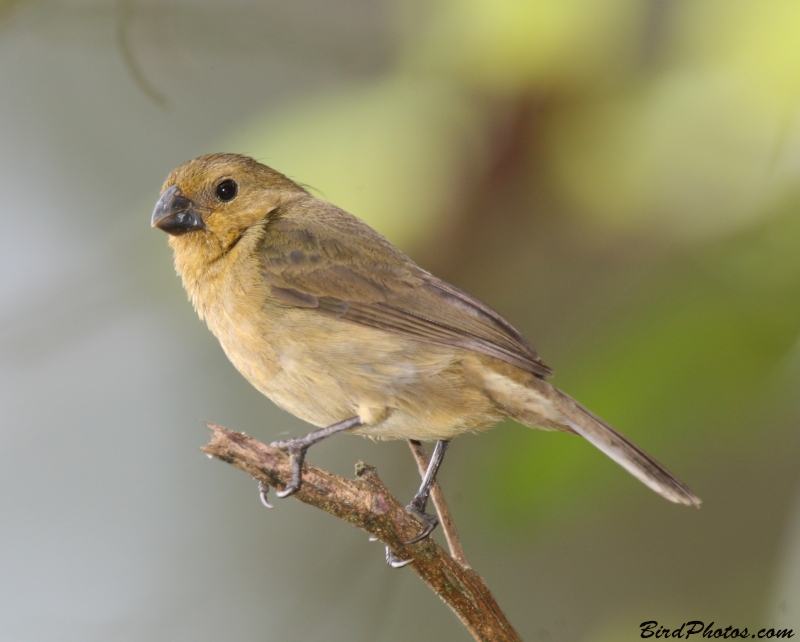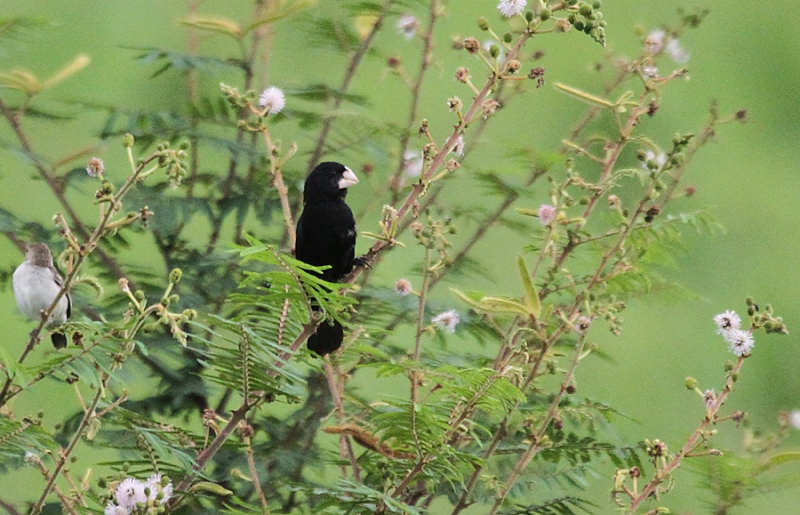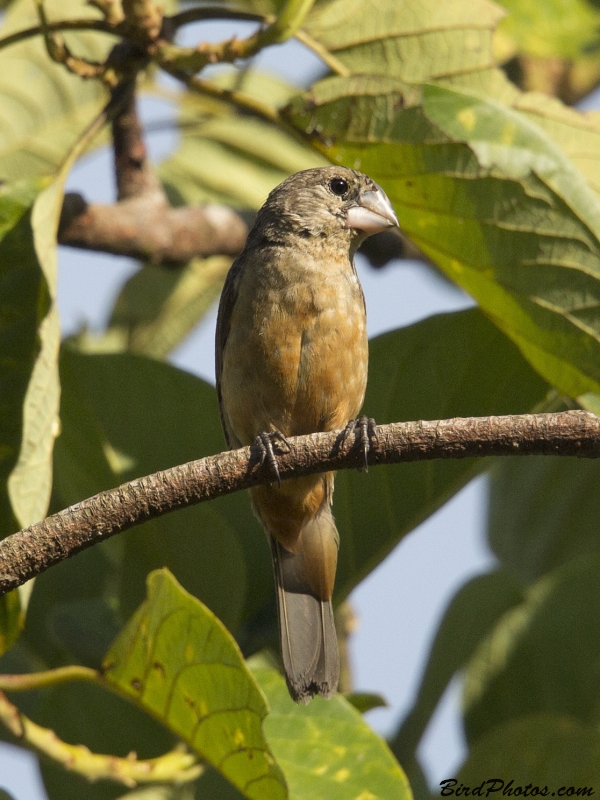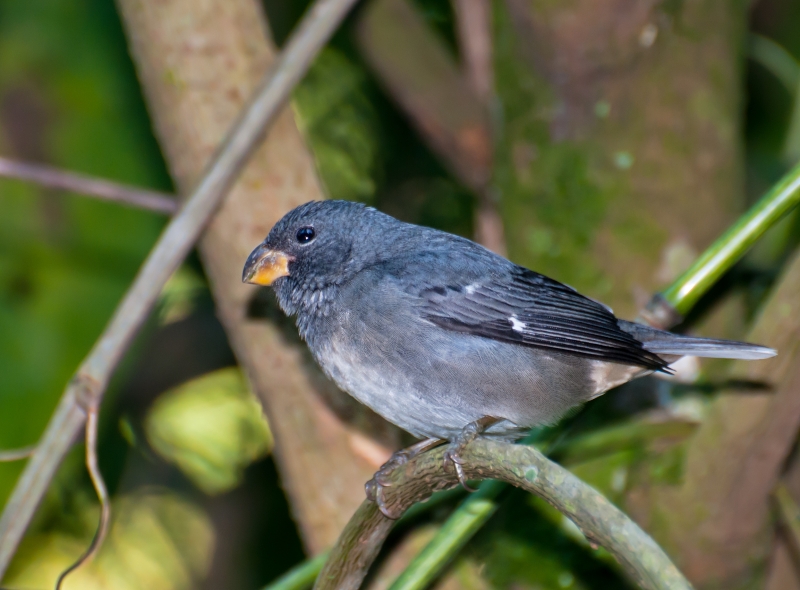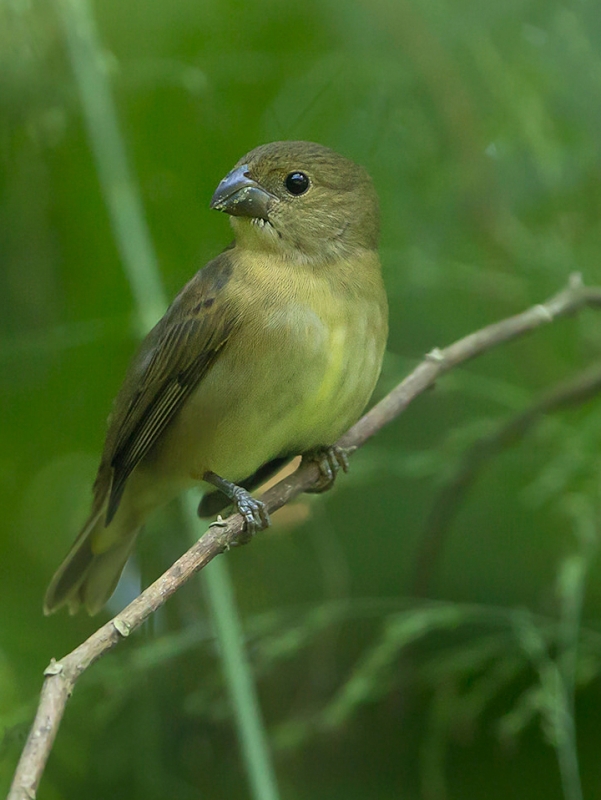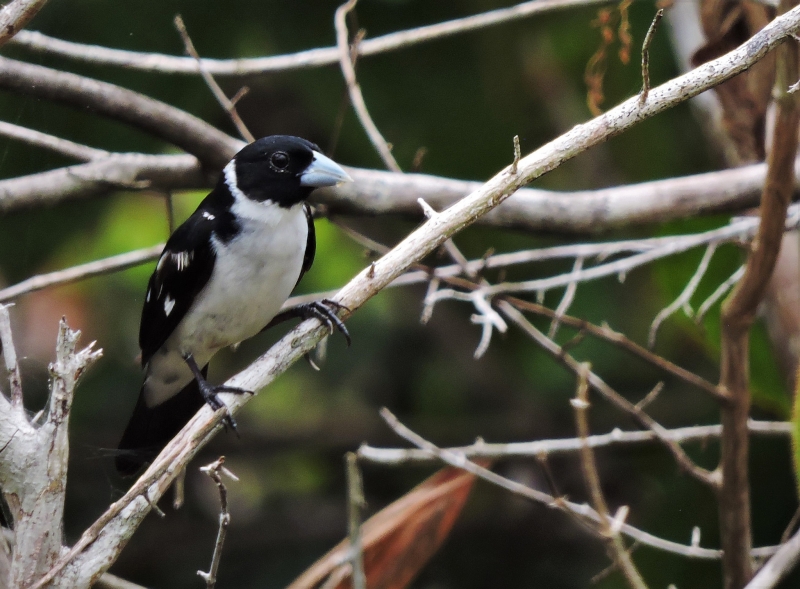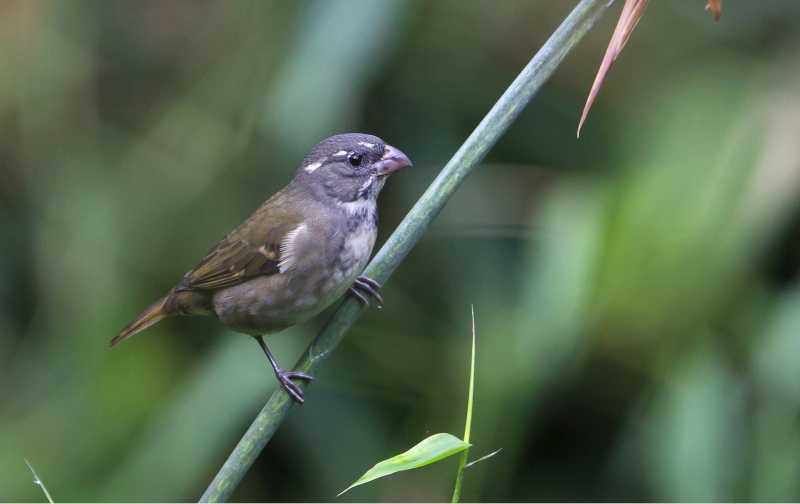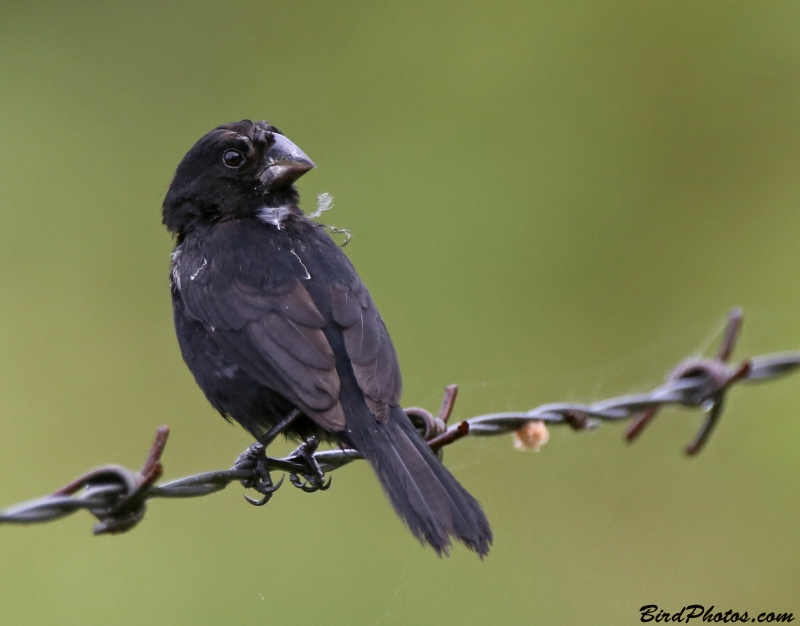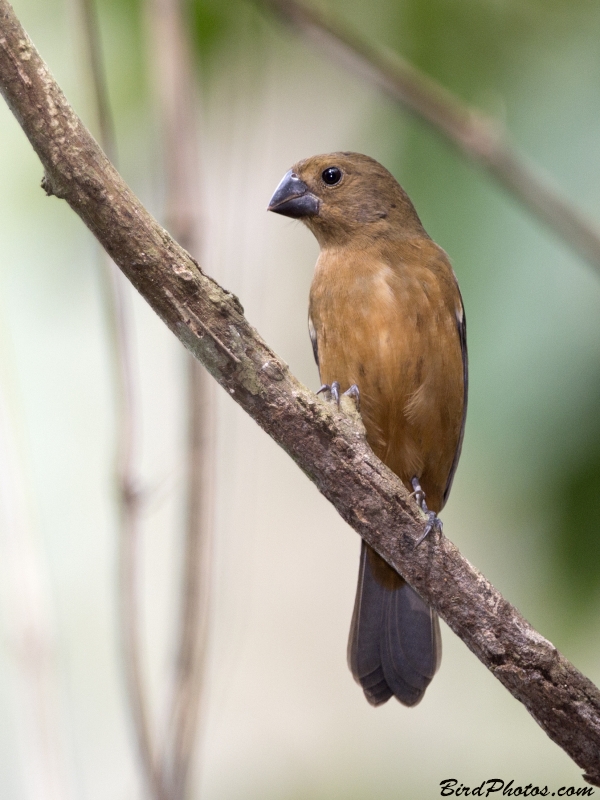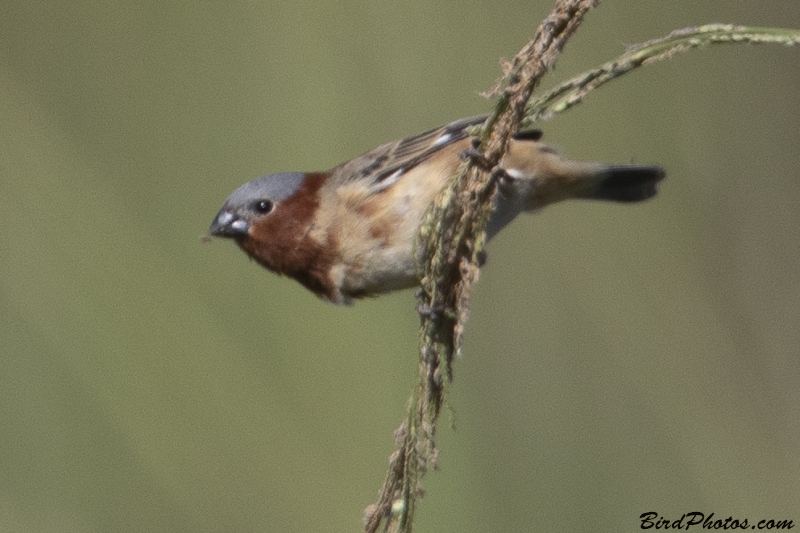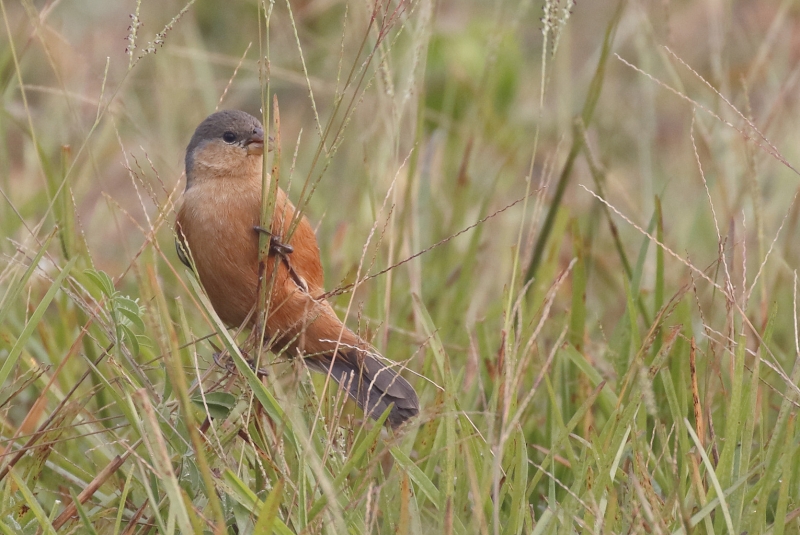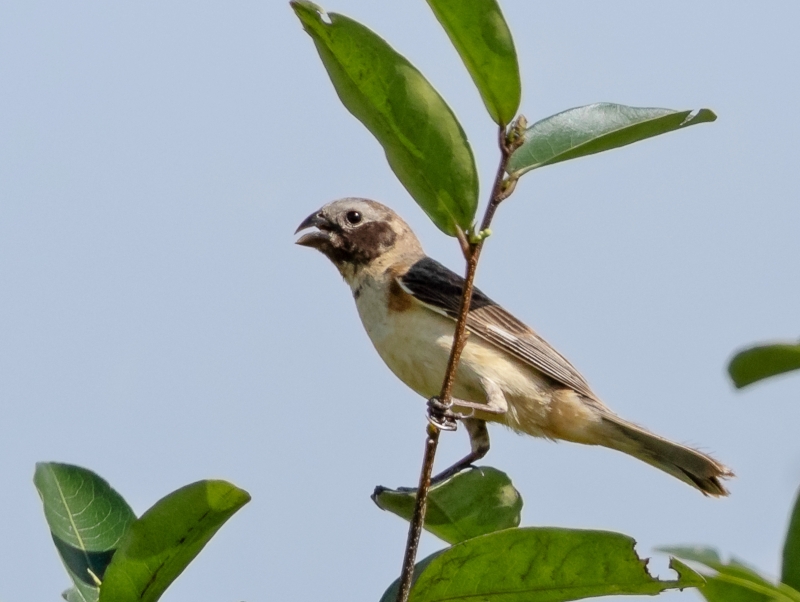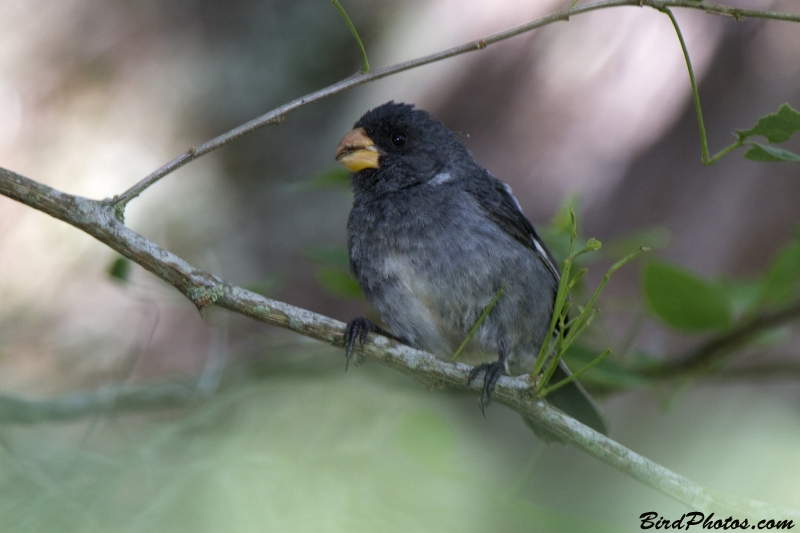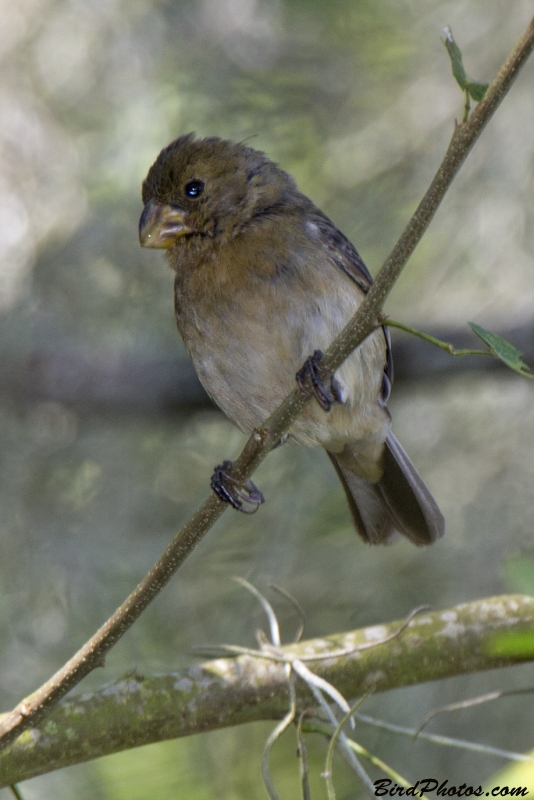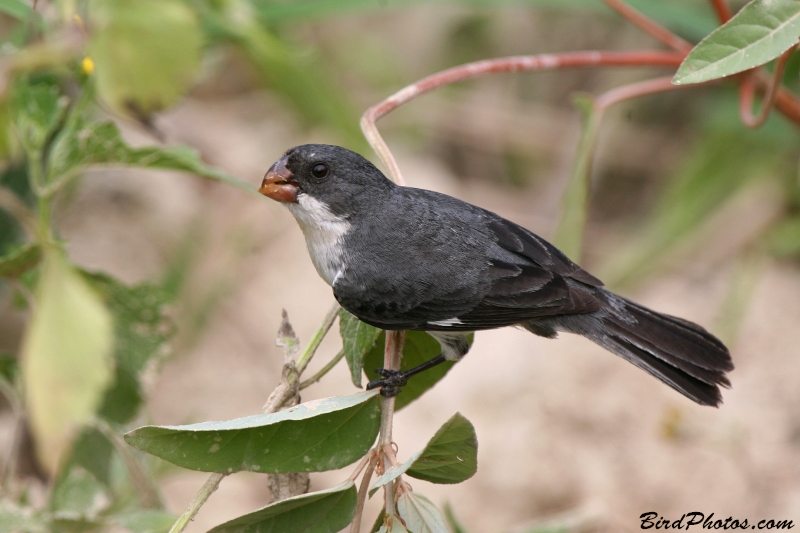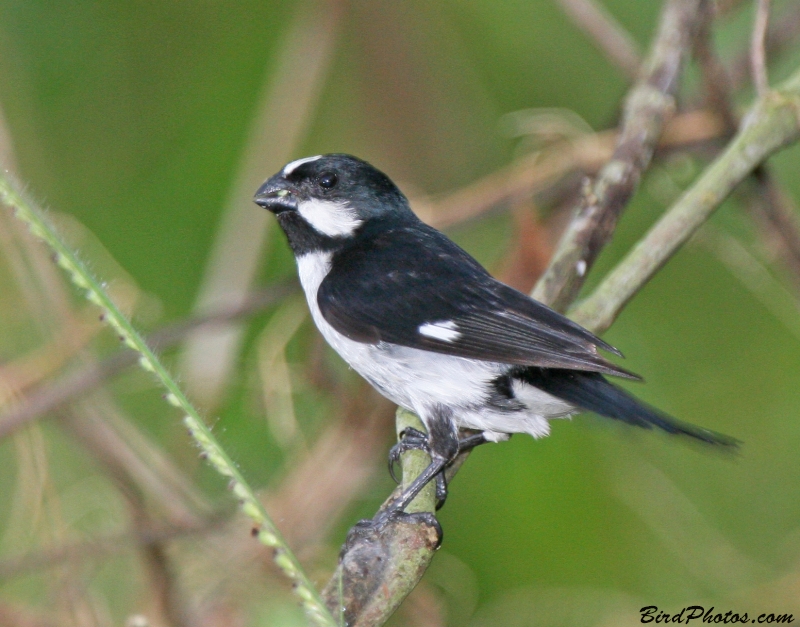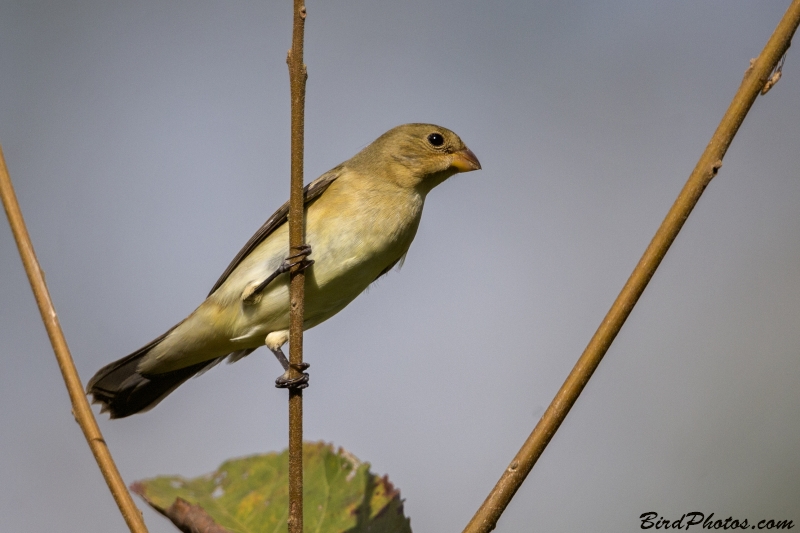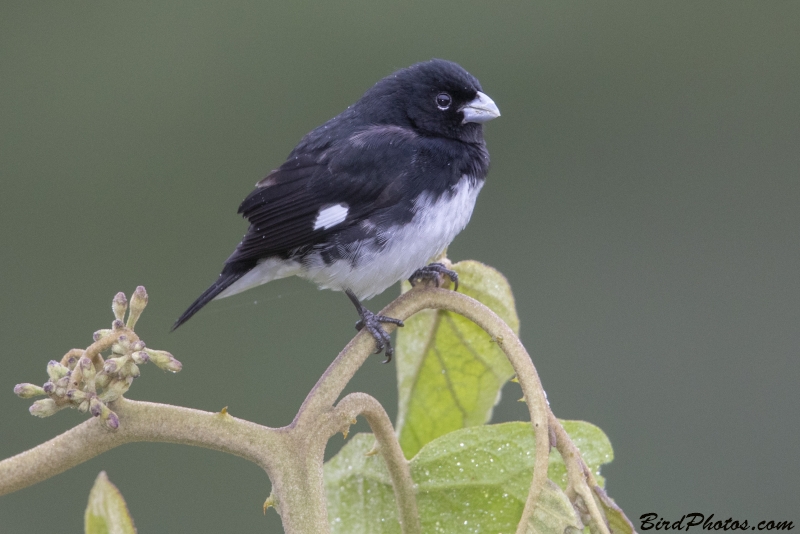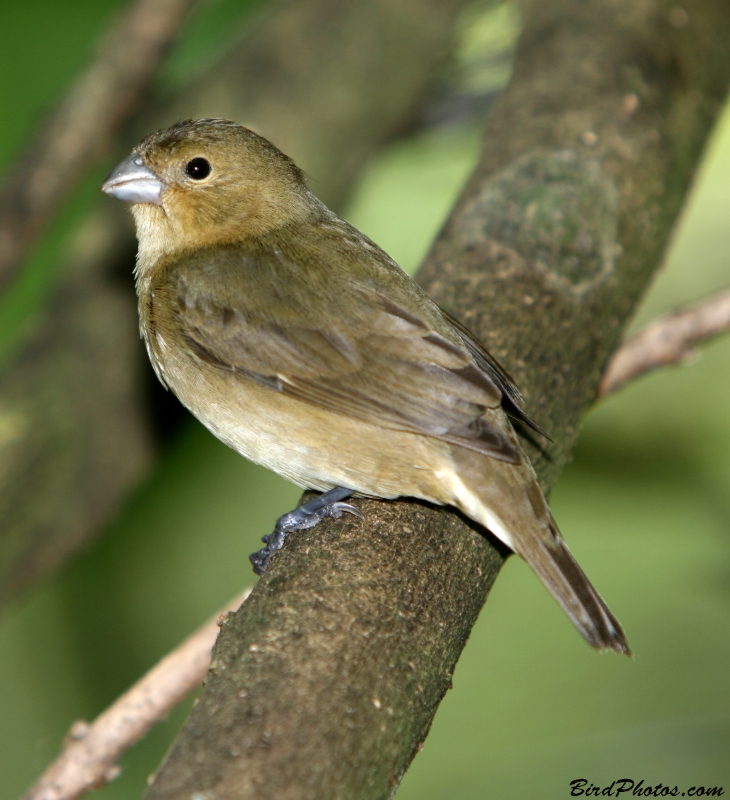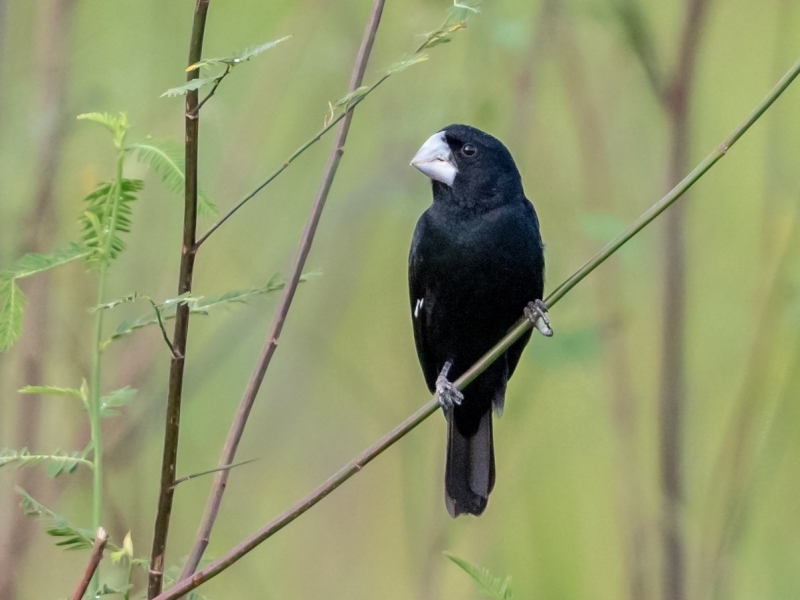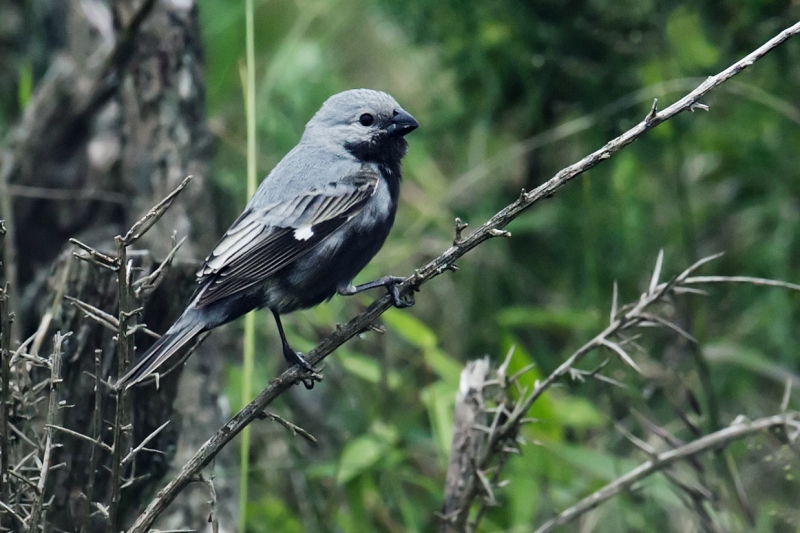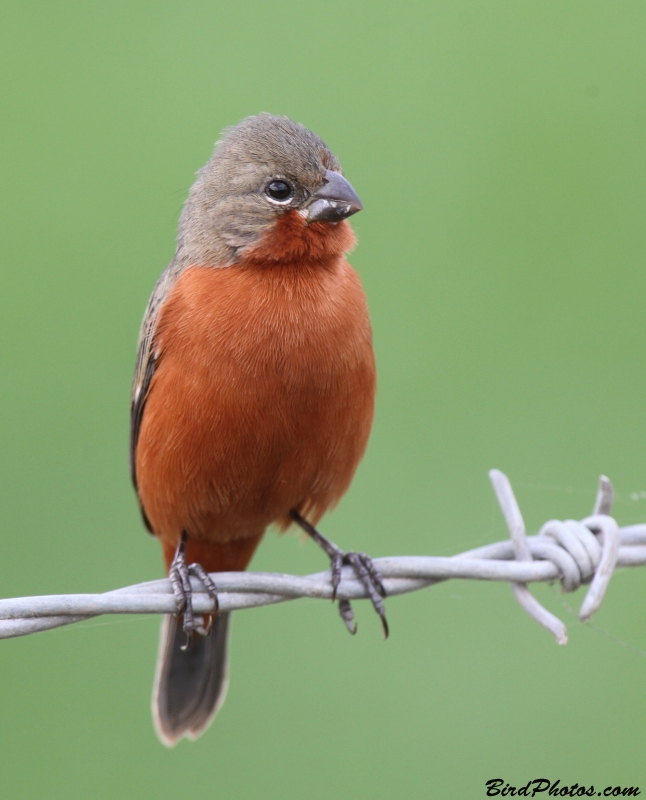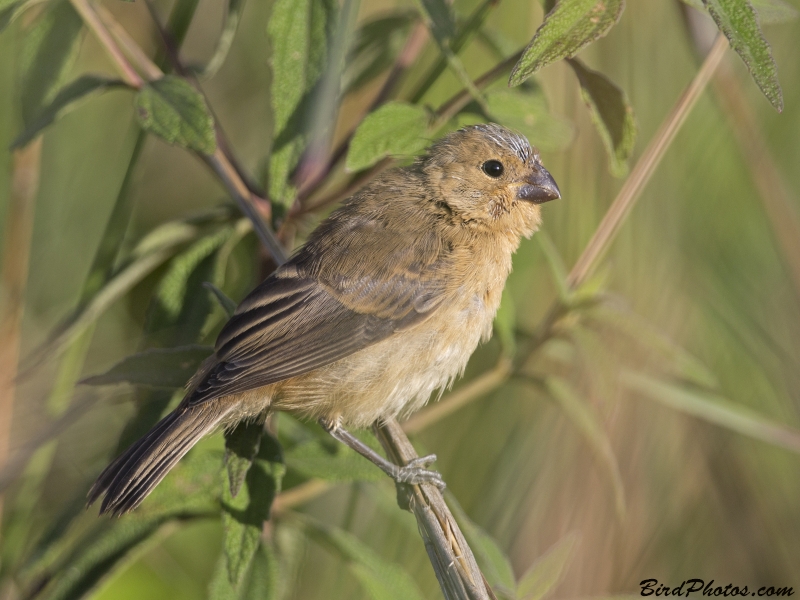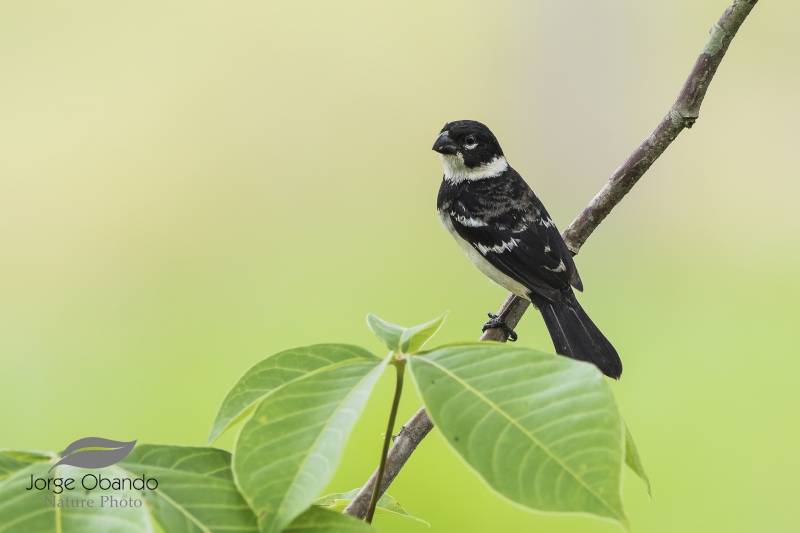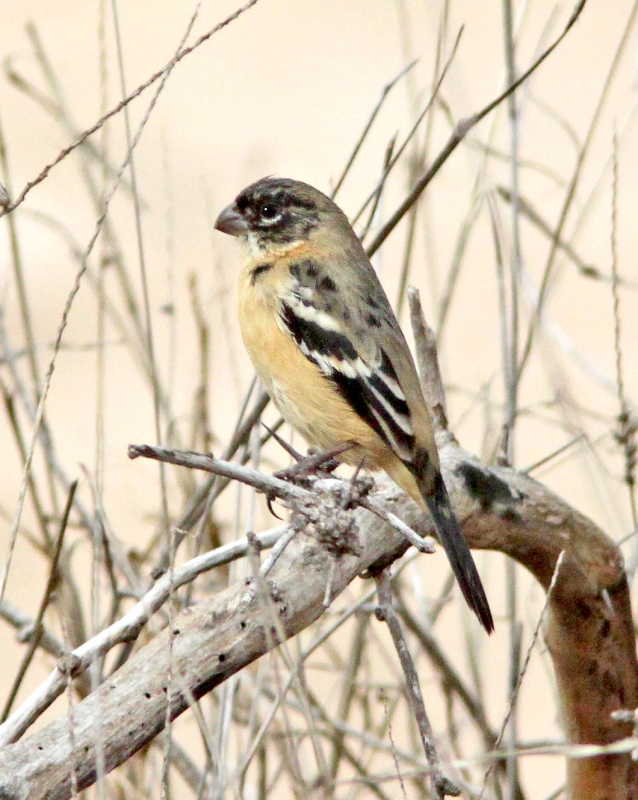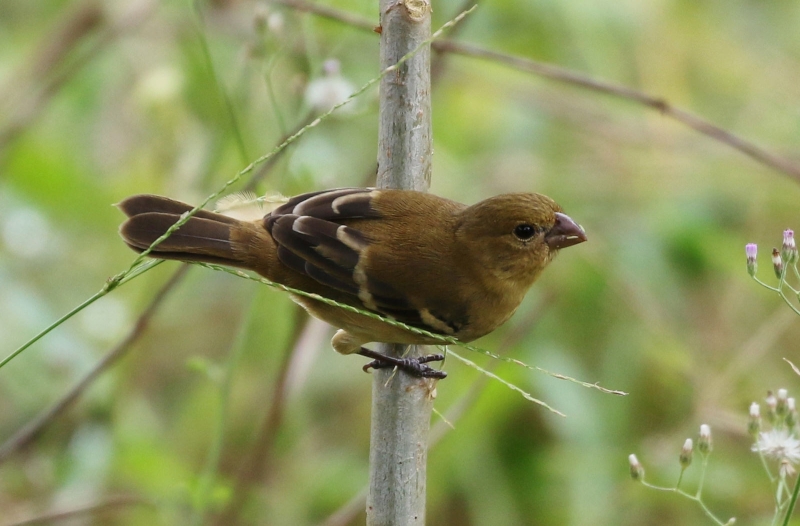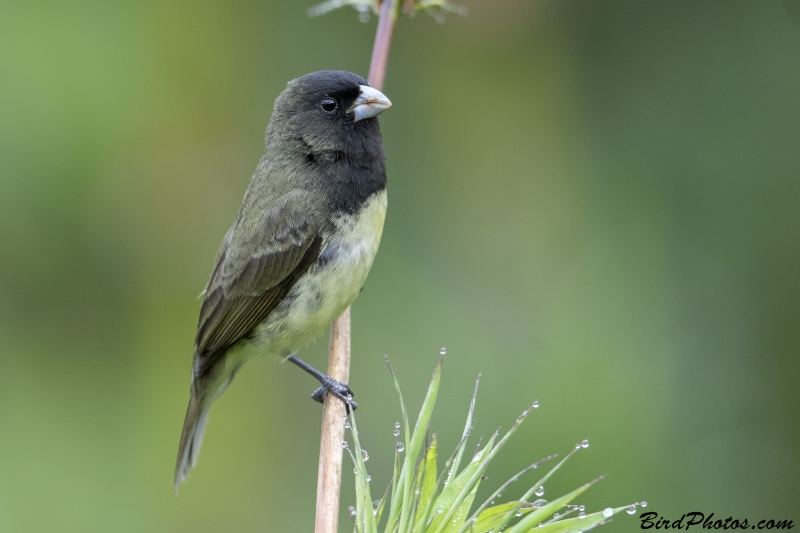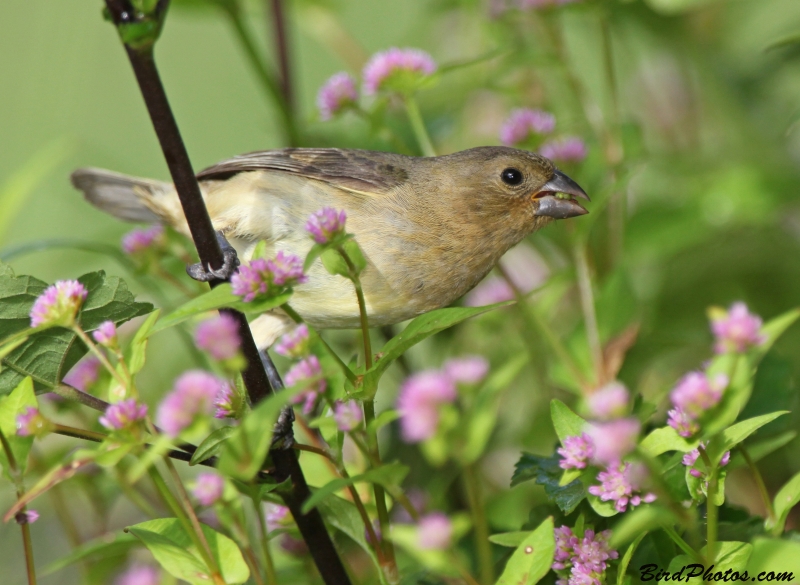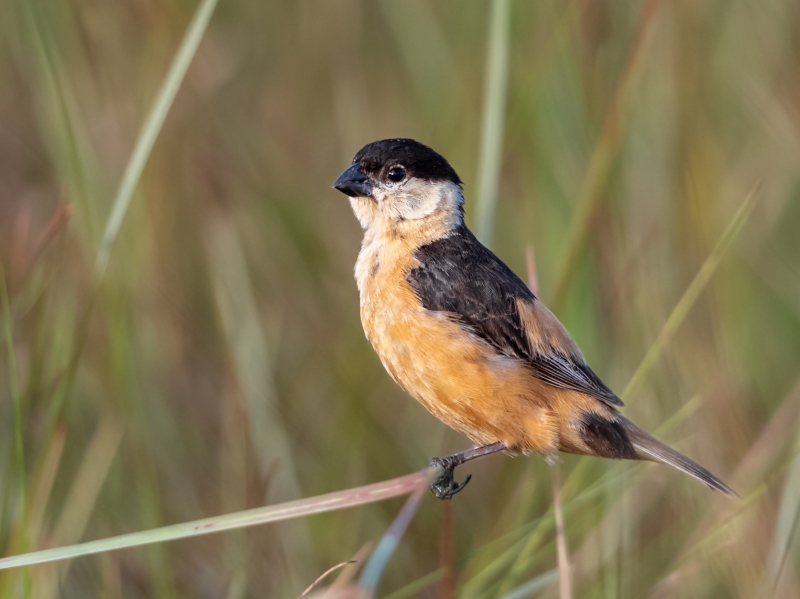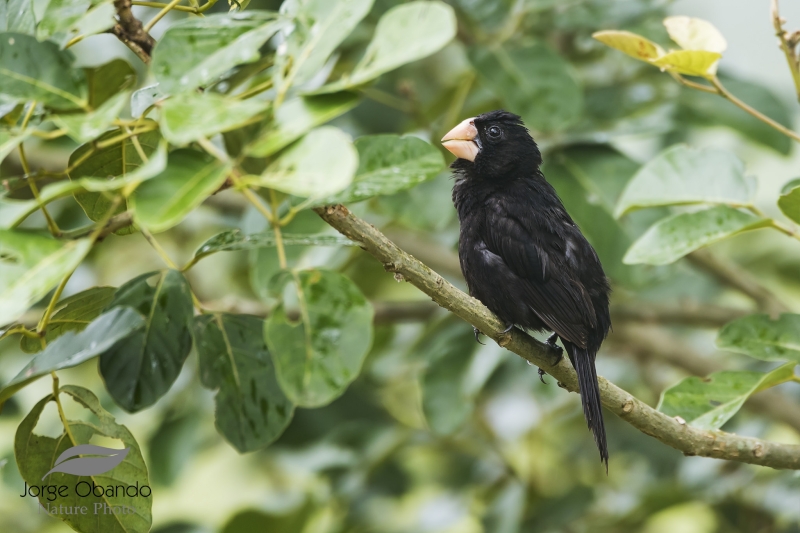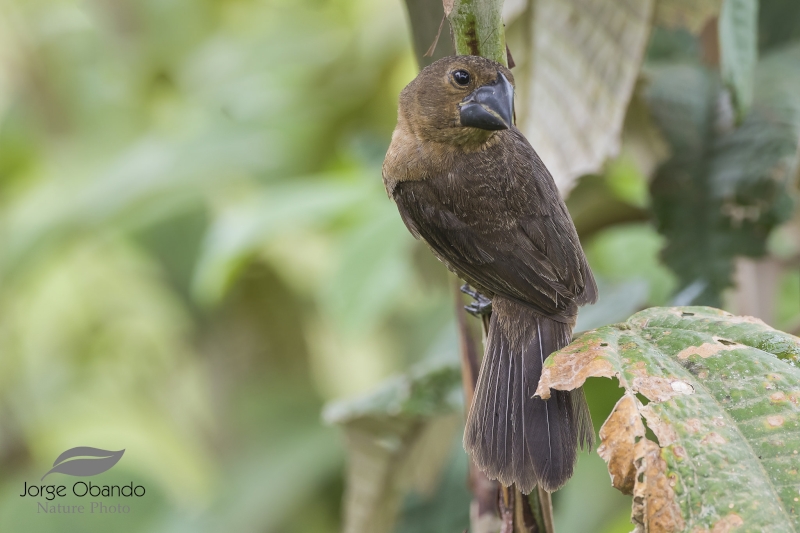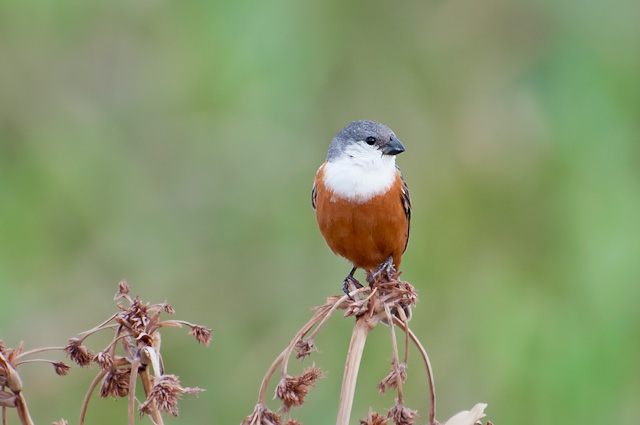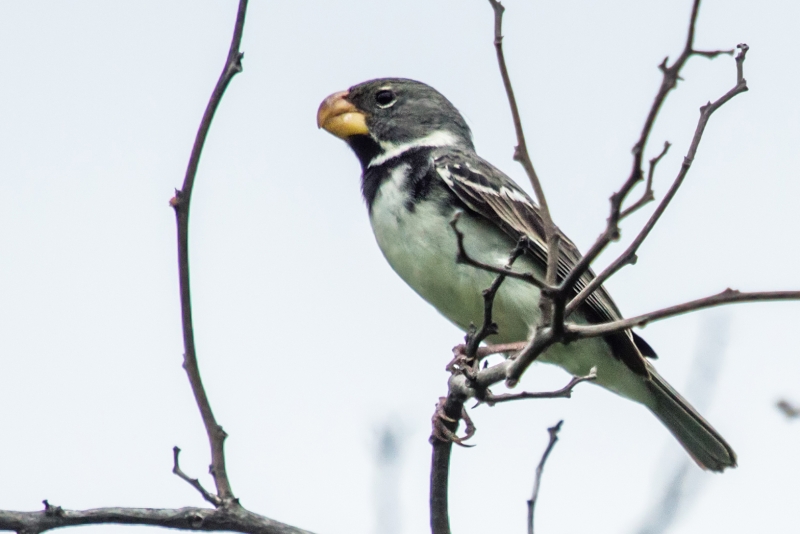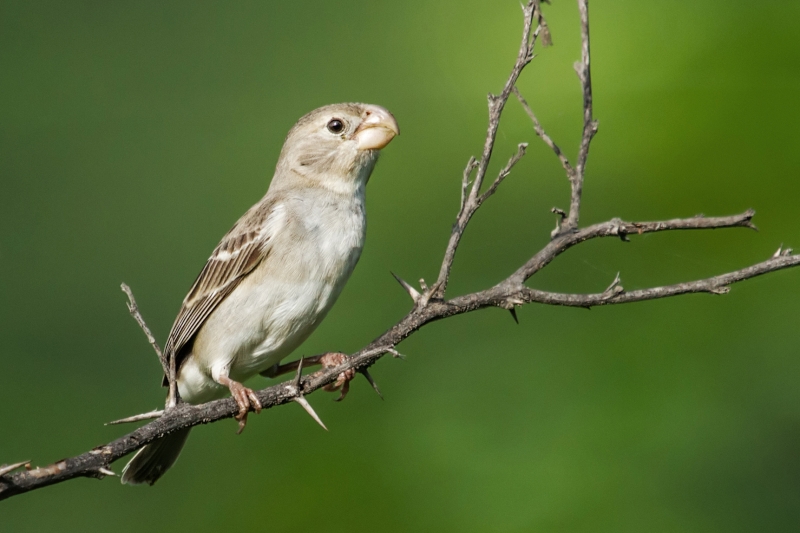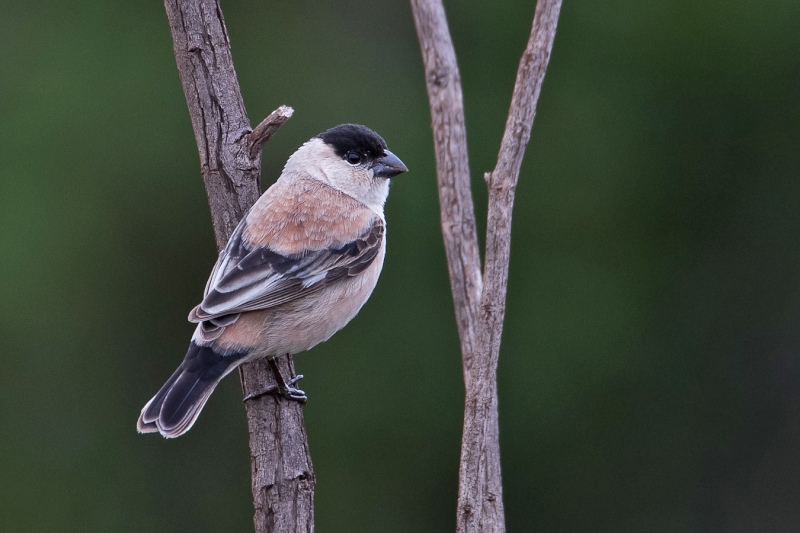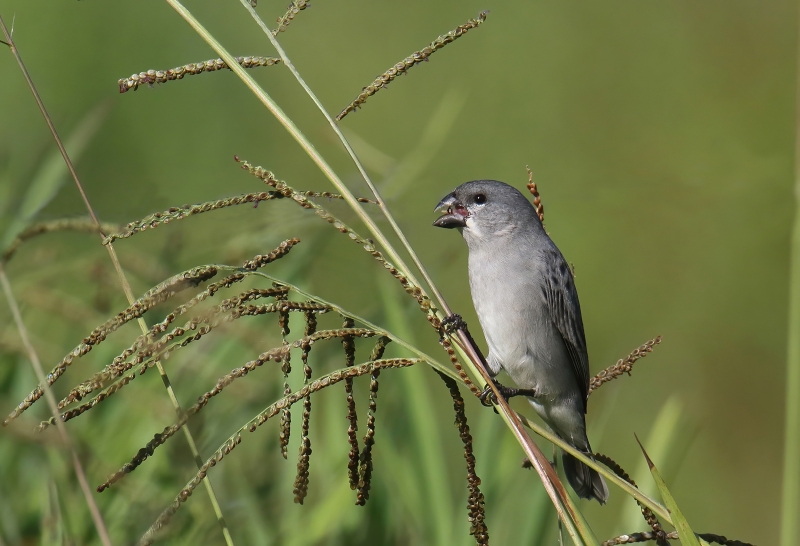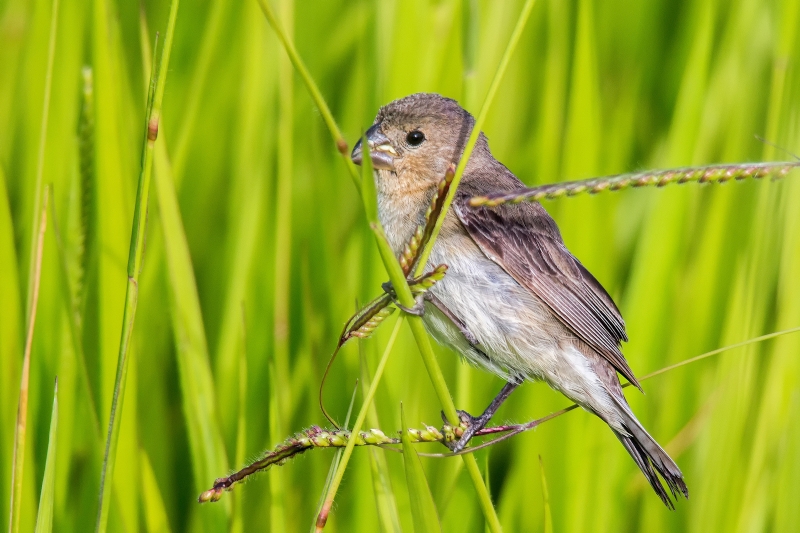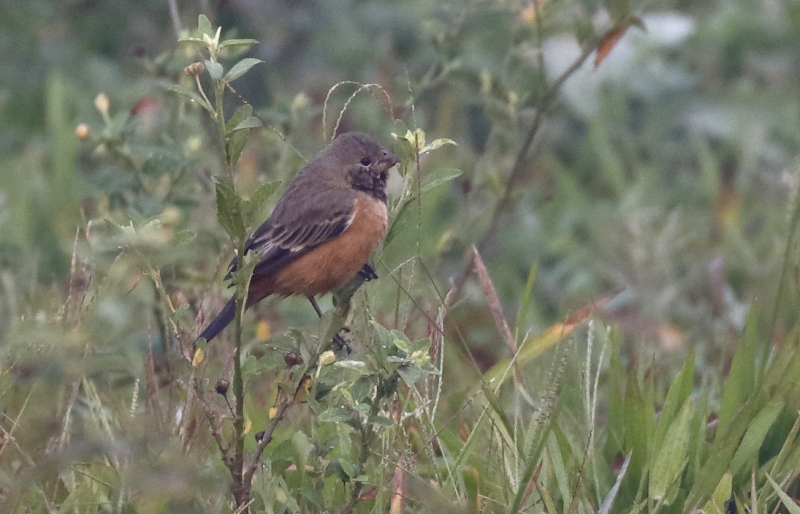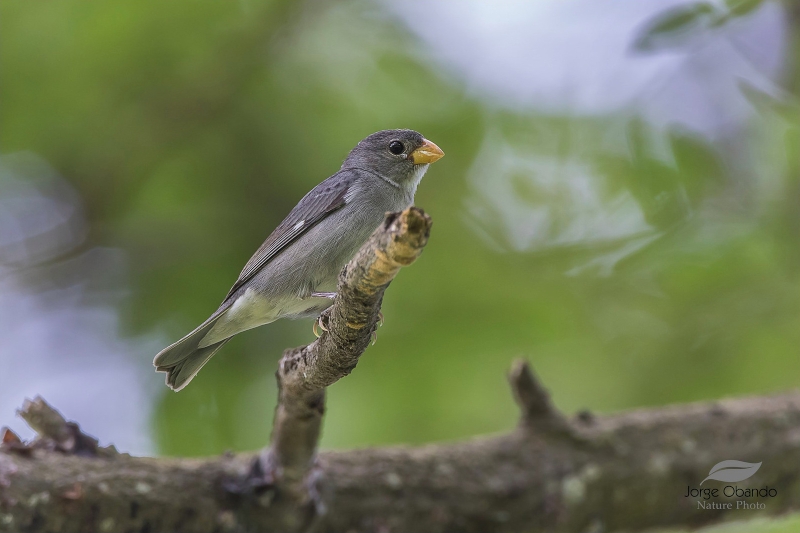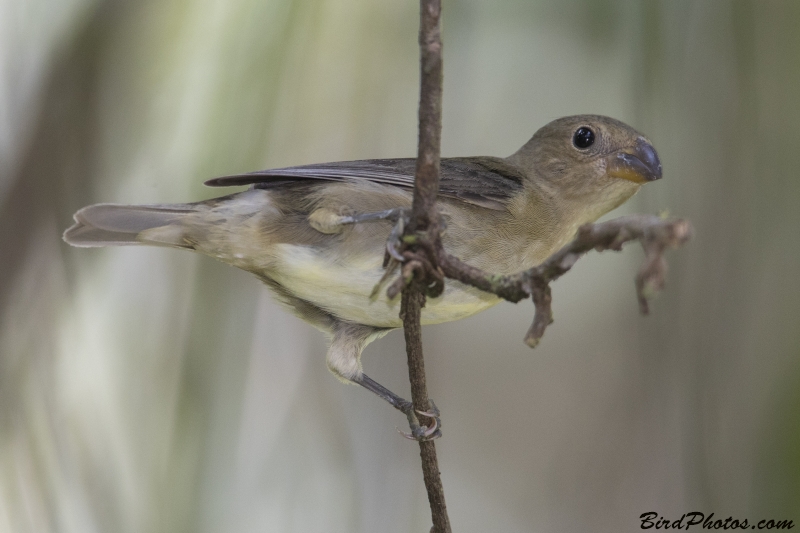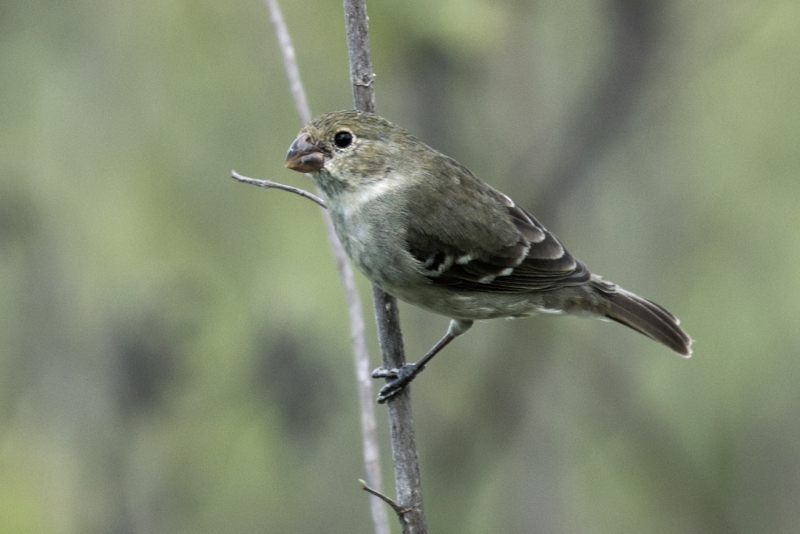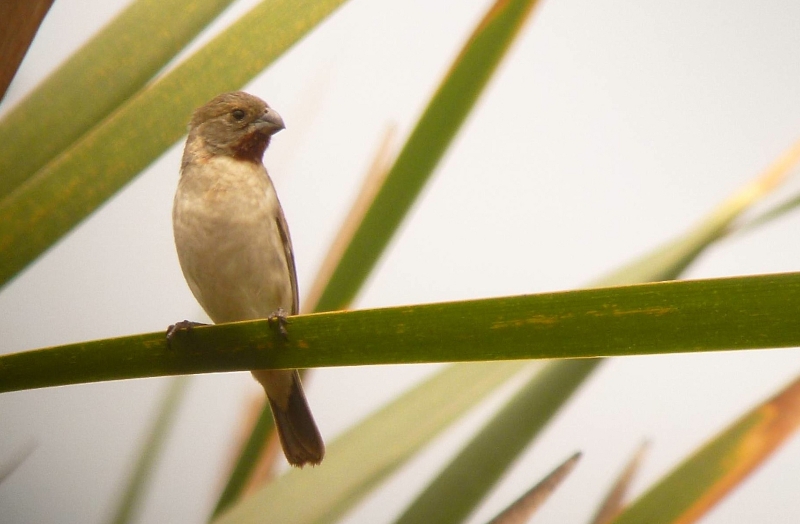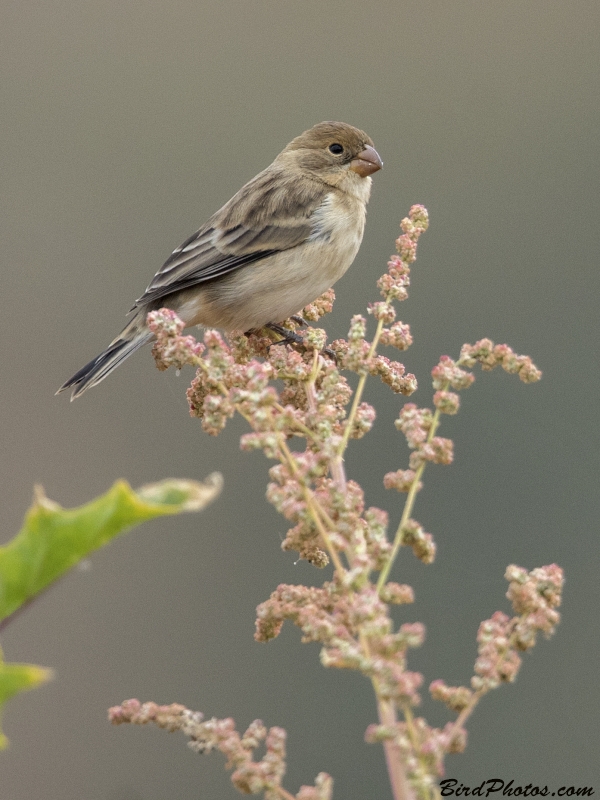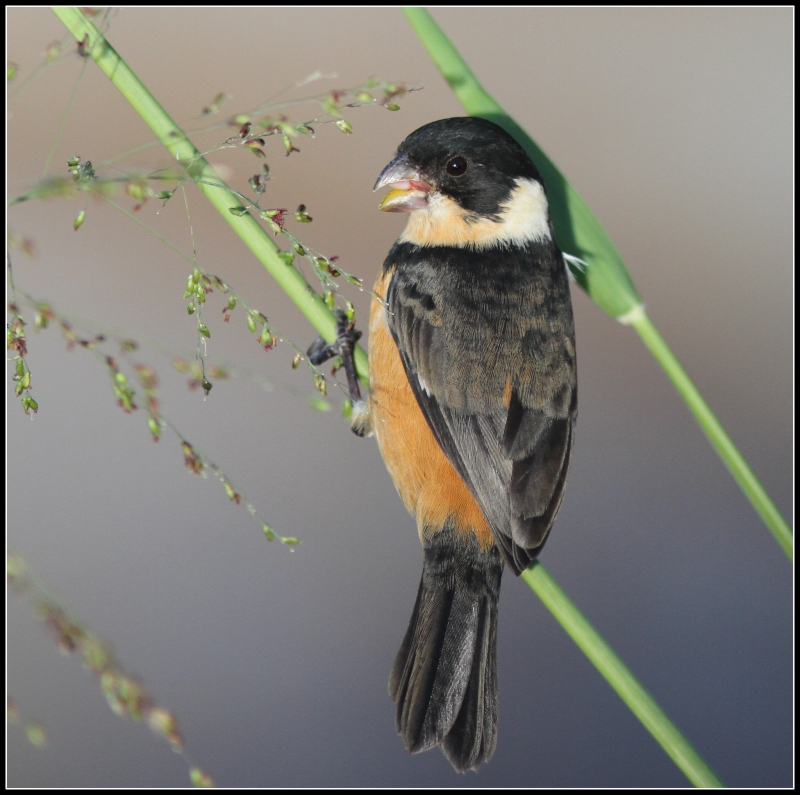| ||||||
| ||||||||||||
Once considered the same species at the all black Thick-billed Seed Finch. HBW writes there is some hybridization in the Madgalena Valley of Colombia. | ||||||||||||
| ||||||
| ||||||
Recently split from Plumbeous Seedeater. On male note yellow bill, bluish color, and sightly larger size (HBW). | ||||||
| ||||||
Compare to Lined Seedeater, but note black crown. Found in marshes and grassland. | ||||||||||||
| ||||||||||||
| ||||||||||||
| ||||||
| ||||||||||||
All black in the north part of range (Central America), while birds further south have a white breast with a crescent-shaped band across the chest. Male from back with tail spread. | ||||||||||||||||||
Very rare and unreliable. | ||||||||||||
| ||||||||||||
| ||||||
| ||||||
| ||||||||||||
Very similar to Tawny-bellied Seedeater but note rich dark red color consistent from throat to vent. | ||||||
Very similar to Rufous-rumped Seedeater but note variation in a paler red between chest and lighter throat. | ||||||
Found in the Ibera wetlands in Argentina and only described in 2016. | ||||||
| ||||||||||||||||||
| ||||||
Moves seasonally to northwest Amazon perhaps to eat grass seeds during the low water season. Compare to Lesson's Seedeater but note white crown; females identical. | ||||||||||||
Found in the Andes at mid altitude levels in semi-open areas. Locally common at best. | ||||||||||||
| ||||||
| ||||||
As seen from the latin name minutus, a tiny seedeater that favors grass seeds. Eating grass seeds | ||||||||||||
| ||||||||||||||||||
| ||||||||||||
| ||||||
| ||||||||||||
| ||||||
| ||||||||||||
| ||||||
Note dark bill compared to similar species. | ||||||||||||
| ||||||
Note white eye-ring compared to very similar Grey Seedeater. Generally a lowland species. Not reliable (wanders), but often found in flocks at bamboo when seeds are present (HBW). Note smaller bill with more curved culmen than Grey Seedeater (hard to be sure about). Female eating bamboo seed. | ||||||||||||
| ||||||
Found in arid scrub, and sometimes common in the Peruvian desert. Additional photo. | ||||||||||||
| ||||||
